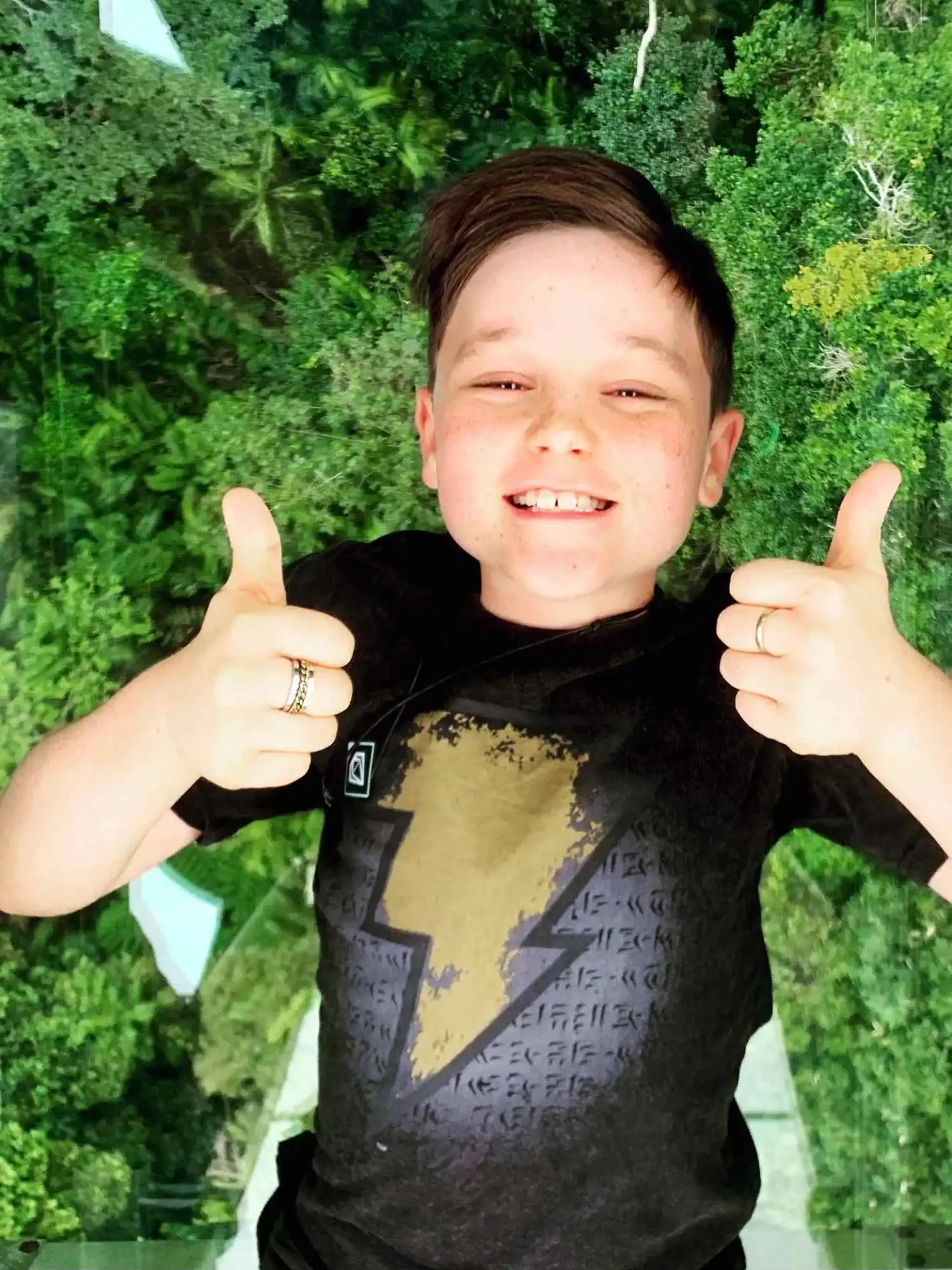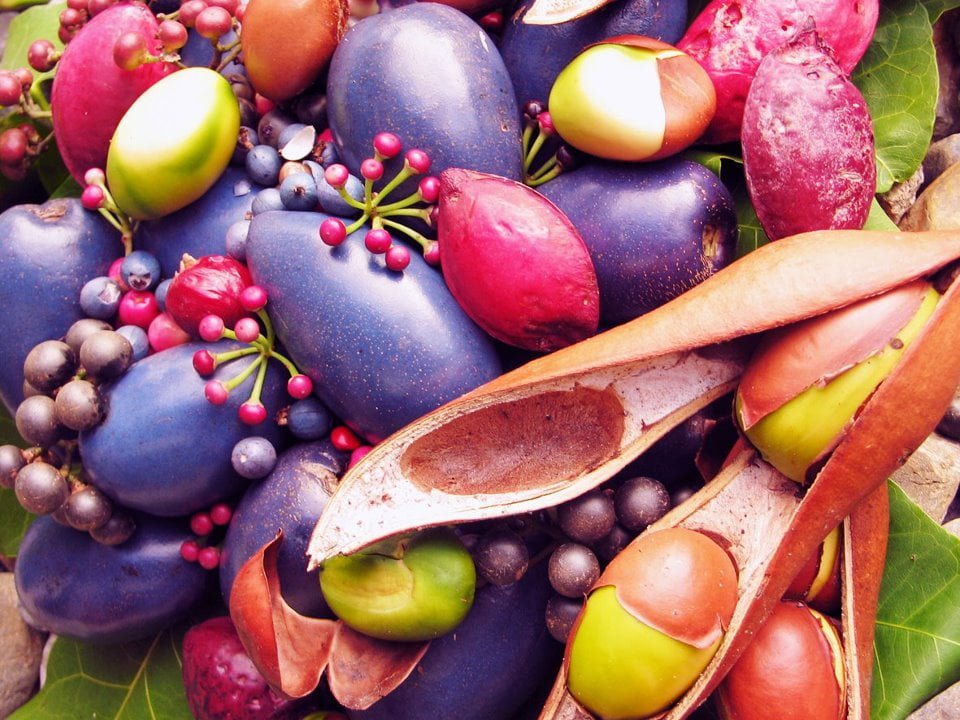Wet Tropics World Heritage area
Ancient rainforest and the Wet Tropics World Heritage area
As Cairns’ best-known rainforest experience, we’re often asked about our unique environment and the plants, animals and people that make up the Wet Tropics World Heritage area. So, here are some of our most frequently asked questions.

Cloud stripping of the Wet Tropics World Heritage area | Image Credit: Skyrail’s Ranger Mike.
Where is the Wet Tropics World Heritage Area?
The Wet Tropics of Queensland World Heritage Area is spread along 450km of rugged Tropical North Queensland coastline between Cooktown and Townsville and alongside the Great Barrier Reef. It covers around 900,000 hectares – about the size of Puerto Rico and just 0.12% of Australia’s continental land mass.
The area includes fourteen separate sections, 29 National Parks and five main precincts starting with our beautiful backyard, the Cairns region. While mostly rainforest, the area also features open forests, woodlands, wetlands and mangroves. The mountains of the Wet Tropics are the northern extent of the Great Dividing Range and from them flow several major rivers including the Bloomfield, Daintree, Mossman, Tully and Barron Rivers.

Skyrail Rainforest Cableway glides above the Wet Tropics World Heritage area.

An ancient rainforest with a fascinationg story through evolution.
Why is the Wet Tropics World Heriatage area so special?
The Wet Tropics World Heritage Area is home to the world’s oldest continuously surviving rainforest, the world’s oldest living culture and is listed as the second most irreplaceable natural World Heritage site in the world by the International Union for the Conservation of Nature (IUCN).
A staggering 130 million years old, the Wet Tropics is home to ancient remnants of Gondwanan forest that once covered the whole Australian continent and has been a safe haven for the ongoing evolution of species, supporting the highest level of biodiversity of any region in Australia.
New species are still being discovered in the Wet Tropics but at last count, which is a big job, there were listed around 2,800 plant, 663 vertebrate animal and 230 butterfly species, including nearly 800 endemic species meaning that they are found nowhere else on earth!
But don’t just take our word for it, David Attenborough famously called it “the most extraordinary place on earth” and it has been listed as a World Heritage Area for its outstanding natural values since 1988.

Unlock the secrets of this ancient landscape with a Ranger Guided Tour at Red Peak.
What is the oldest culture on earth and who are the Traditional Owners of the Wet Tropics?
The oldest civilisation and culture on earth belongs to the Aboriginal people of Australia, with ancestries dating back 75,000 years.
Here in the Wet Tropics, the Rainforest Aboriginal Peoples are extraordinarily diverse – just like the landscape – and represent at least 20 tribal groups, 120 clans and eight language groups. This is the only place in Australia where Aboriginal people have permanently inhabited a tropical rainforest environment and their knowledge and experience, particularly in their treatment and processing of toxic plants is quite unique and extraordinarily technical. These traditions and the guiding stories of creation beings around the foods of the forest and how to make them edible are of outstanding heritage value both nationally and globally.
The Traditional Owners of the land surrounding Skyrail Rainforest Cableway – an area known as Djirri Nyundu Nyrrumba – are the Djabugay people. They maintain a close spiritual connection with their country and contribute strong land management skills and practices to its conservation. Djabugay country includes the Barron Gorge National Park which in 2004 was the first park in Queensland to have a Native Title determination.

Southern Cassowary and their young at Red Peak.
Can I see a Cassowary at Skyrail?
If you’re lucky! They are certainly there with around 4,400 estimated to live throughout the Wet Tropics area. They are usually hard at work as the gardeners of the rainforest, but you’ll need to keep your eyes peeled as they’re elusive and extraordinarily good at blending in with the shady sections of the forest.
Cassowaries are one of the closest living species to dinosaurs and they truly are the kings of the rainforest. The largest native vertebrate in Australian rainforests, they stand up to 1.8m tall and weigh up to 80kg making them the second heaviest bird in the world behind the ostrich.
They are vital to the regeneration and evolution of the rainforest through their foraging habbits. As frugivores, a diet of fruits, they consume huge amounts and varieties of rainforest fruits which they swallow whole and then deposit across their home territory of up to nearly 2.5kms ².
To learn more about these wondrous, flightless birds, visit our recent Cassowary blog.
What’s the best time of year to visit Skyrail and see the tropical rainforest?
One of the best things about Cairns and Tropical North Queensland is our year-round tropical climate but don’t make the mistake of thinking every month is the same. Our distinct seasons mean that there’s something to look forward to whatever the time of year you choose to explore our region.
Of course, we’re not called the Wet Tropics for nothing, and Summer (December to February) is when nature really comes alive with refreshing rains, flowing waterfalls, unique wildlife and incredible tropical fruits in season.
Autumn (March to May) is often when the rainforest is at its most lush after the summer rains and the Barron River and Falls really put on a show.
Our Winter (June to August) is more like the rest of Australia’s perfect summer day with temperatures in the mid-twenties and falling in the evenings. Daylight hours vary by less than two hours between winter and summer so the days are always long enough for an adventure or two.
And finally, Spring (September to November) brings the colour of birds and flowers, and a bright start to each day with gorgeous sunrises.

The King Orchid at Red Peak blooms on average every 3 years.
The Wet Tropics of Queensland is one of the most remarkable places on earth, a natural and cultural wonder with so much to discover! Whenever and however you visit, we can’t wait to show you its beauty from above the canopy and at the forest floor, sharing its secrets with you when you’re next in Tropical North Queensland.
Tropical Mama has lived in Cairns and the Daintree Rainforest for 25 years and is passionate about sharing the unique experiences of Tropical North Queensland with her extended family.













